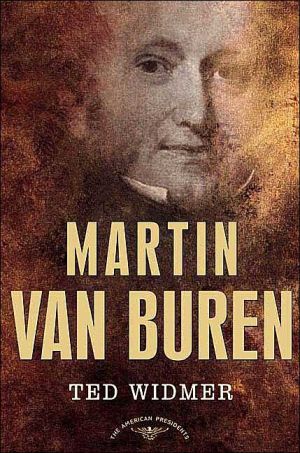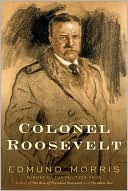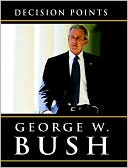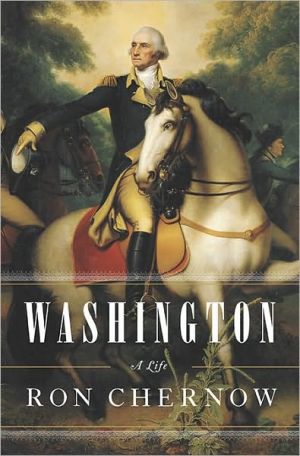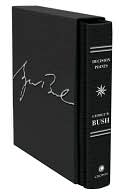Martin Van Buren (American Presidents Series)
The first president born after America's independence ushers in a new era of no-holds-barred democracy\ The first "professional politician" to become president, the slick and dandyish Martin Van Buren was to all appearances the opposite of his predecessor, the rugged general and Democratic champion Andrew Jackson. Van Buren, a native Dutch speaker, was America's first ethnic president as well as the first New Yorker to hold the office, at a time when Manhattan was bursting with new arrivals....
Search in google:
The first president born after America's independence ushers in a new era of no-holds-barred democracyThe first "professional politician" to become president, the slick and dandyish Martin Van Buren was to all appearances the opposite of his predecessor, the rugged general and Democratic champion Andrew Jackson. Van Buren, a native Dutch speaker, was America's first ethnic president as well as the first New Yorker to hold the office, at a time when Manhattan was bursting with new arrivals. A sharp and adroit political operator, he established himself as a powerhouse in New York, becoming a U.S. senator, secretary of state, and vice president under Jackson, whose election he managed. His ascendancy to the Oval Office was virtually a foregone conclusion.Once he had the reins of power, however, Van Buren found the road quite a bit rougher. His attempts to find a middle ground on the most pressing issues of his day-such as the growing regional conflict over slavery-eroded his effectiveness. But it was his inability to prevent the great banking panic of 1837, and the ensuing depression, that all but ensured his fall from grace and made him the third president to be denied a second term. His many years of outfoxing his opponents finally caught up with him.Ted Widmer, a veteran of the Clinton White House, vividly brings to life the chaos and contention that plagued Van Buren's presidency-and ultimately offered an early lesson in the power of democracy. The New York Times - Michael Kazin Van Buren, as Widmer wisely concludes, was one of those ''not-quite-heroic'' figures without whom no democracy would operate for long. He didn't achieve greatness, but he set a great insight in spin: without vibrant opposition parties, self-government becomes a mockery of its ideals. For that alone, Little Van deserves to be remembered as a big man indeed.
Martin Van Buren\ \ By Ted Widmer \ Times Books\ Copyright © 2005 Ted Widmer\ All right reserved.\ ISBN: 0-805-06922-4 \ \ \ Chapter One\ Kinderhook \ Legend has it that Martin Van Buren was once received at a royal reception by Queen Adelaide of the Netherlands. Before a crowd of courtiers and swells, she politely asked the distinguished Dutch-American how far back he could trace his ancestry. Van Buren bowed deeply and responded, "As far back as Kinderhook, Your Majesty." That was vintage Van Buren, saying everything and nothing at once.\ To begin to peel back Van Buren's mysteries, there is no more logical place to start than his hometown. Kinderhook is located in Columbia County, New York, on the east bank of the Hudson, twenty miles south of Albany. Like all hometowns, it is far more than a destination to be casually entered into a Yahoo! search engine. For Van Buren, it was the opposite of a terminus - it was a place of origin, and for most of his forebears, the sum and circumference of geographical knowledge. In other words, it was a place to be left behind.\ Today's Kinderhook is a charming village, eager to promote its link to the Dutch past and to its two celebrities, Van Buren and Washington Irving. It boasts the usual saintly relics associated with medieval pilgrimages, including Van Buren's fine china toilet, one of the first such contrivances installed in a private residence in the United States, andits curio shops and bed-and-breakfasts ooze quaintness. To be sure, it is as lovely a place to escape to as from. Like other small seats of presidential aspiration - say, Plymouth, Vermont (pop. 440), or West Branch, Iowa (pop. 1,908), or Plains, Georgia (pop. 716) - it inspires with the notion that anyone from anywhere can become the leader of the world's most powerful nation.\ But there is more to Kinderhook (pop. 1,293) than just careful scenery. Like all old towns in the postindustrial North, it has tired neighborhoods at the periphery, marginal in every sense. The Salvation Army is doing a thriving business, as are a couple of auto body shops, the Shear Magic Hair Salon, and an Off-Track Betting facility. Along the highways leading in and out of town are the careworn signs of roadside capitalism we routinely drive by without much noticing: AKC BEAGLES 4 SALE, or, even more economically, BAIT. The would-be Irving, eager to paint Kinderhook as an eighteenth-century Dutch movie set, does so at his peril. Real people live here.\ In fact, Kinderhook's quaintness was earned the hard way. Throughout its early history, it witnessed one political struggle after another, usually pitting the landed gentry whose mansions dot the upper Hudson like so many navigational beacons against the regular folks who also happened to live here. More than most towns on the upper Hudson, Kinderhook emerged as an island of two-party democracy in a region that was at that time anything but democratic. The first clue to its identity lies in its location at a desirable wide spot on the Hudson, where a creek flows in from the east. Local histories claim that this was the place where Henry Hudson, after traveling across the Atlantic and up the great river, decided he'd seen enough of America and turned the Half Moon around, headed for home. Writing of Hudson's U-turn, a wordy antiquarian called Kinderhook "the Ultima Thule of his personal explorations and the Ne Plus Ultra of his desires." That is too poetic for most stomachs, but it comes as no surprise to learn that the favorable location soon turned into a bustling little port, and that its numbers grew as the Dutch poured into the Hudson Valley in the seventeenth century.\ But like any real estate story, the key to Kinderhook's story is location (there is still a Van Buren Realty at the center of town). This precise spot was one of the few places on the upper Hudson that fell outside the great manorial tracts given to the great patroons - the enormously wealthy seventeenth-century landholders who controlled giant tracts of land as if they were feudal lords, which they were. Paradoxically, the Hudson Valley, future home to stalwart Democrats like Van Buren and FDR, was one of the least democratic regions in colonial America. The mighty Van Rensselaers owned a sprawling entity known as Rensselaerswyck, three-quarters of a million acres in Columbia, Albany, and Rensselaer counties; the equally baronial Livingstons claimed 250,000 acres in Columbia County.\ Yet Americans have a way of overpowering - or, better yet, ignoring - the moldy parchments written in secret chambers in Europe. The settlers who came to Kinderhook had little patience for these claims, some of which exceeded the size of entire European nations, and all of which were vague and difficult to enforce. As a result, this particular zone of democracy along the Hudson attracted numerous citizens who prized freedom from authority. Soon, roads were linking this favored spot to the other clusters of semi-Americans living in the region. "The Great New England Path" had once brought Native Americans from Massachusetts, and grew into an important colonial highway connecting Kinderhook to Albany in one direction and Boston and New York in the other.\ Naturally, these axial roads drew travelers, lawyers, and other miscreants populating the eighteenth-century landscape. The pace quickened in the aftermath of the French and Indian War, which had opened up vast reaches of New York's hinterland, and the American Revolution, which did more of the same. Travelers streamed over the highway from the east, eager to start something better in the new world that always lay just over the horizon. Many tarried for a night or two in a modest tavern run by the easygoing Abraham Van Buren. And it was here, on December 5, 1782, that Martin Van Buren entered the world, literally born to the bosom of politics, for his father's tavern doubled as the local polling place at election time.\ At first, there was precious little to indicate that the infant would merit the future interest of historians. The first Van Burens had slouched toward Kinderhook in 1631 after a long journey from Holland. The progenitor, Cornelis, did not even have a proper last name, so his son Marten added the Van Buren (being thousands of miles from the old country made a distinguished lineage that much easier to fabricate). They were joined by neighbors and cousins - more or less one and the same - and discovered an early form of the American Dream, defined as agriculture and the creation of more Van Burens. If the myth is that Americans are always on the move, always improving themselves, there was little in the Van Buren saga to support it. For a century and a half, they stayed exactly where they were - close to the land and close to each other. Like characters in a Gabriel Garcia Marquez novel, they regenerated themselves across the centuries, oblivious to the upheavals happening around them. Kinderhook was as inbred as any island, and more than a few Van Burens married their kin, including Van Buren's father and grandfather. In his autobiography, the future president boasted with a Bosnian insularity: "My family was from Holland, without a single intermarriage with one of different extraction from the time of the arrival of the first emigrant to that of the marriage of my eldest son, embracing a period of over two centuries and including six generations."\ You can get a pretty good idea of life in old Kinderhook by looking at any Dutch genre painting of the seventeenth century - families sitting around the hearth, cows lowing in the fields, young men and women flirting in the shadows. It was a world that Vermeer would have instantly recognized - the sleepy town rising and setting with the sun, and following the same harvest rhythms of any farm community. Authority flowed lazily downward from the local gentry, like a mountain stream. Information was spread through conversation and eavesdropping, and outsiders were distrusted. In the 1780s, after some farm animals disappeared, a local rumor blamed a wild, mixed-race family of blacks, whites, and Indians, all named Johnston, who allegedly lived in little huts in the Pine Woods outside of town, and allowed illicit relations between brother and sister. Like their neighbors, the Van Burens - all seven families with that name - spoke furtively in Dutch to one another, attended the Dutch Reformed Church, and prayed to a Dutch God. Those who were not Van Burens were more than likely to be Van Alens, Van Nesses, or Van Schaacks. Washington Irving was captivated by these aspects of Kinderhook during his stay there, and in turn captured some of it in his writing - the low-roofed dwelling, the spreading sycamore, the henpecked husband sneaking out of earshot for a dram.\ In many ways, Abraham Van Buren was the embodiment of an Irving character - a bit careless about money, and not the most eager young man to settle down with a wife. In fact, he was thirty-nine by the time that he surrendered his independence in, of all years, 1776. That year he married Maria Hoes Van Alen, a widow with three children. There is some evidence that she completes the Irving profile as a sturdy, self-reliant housewife, not one to suffer fools gladly, although in truth very little is known about this crucial formative influence on the future president. She bore two more children to Van Buren before Martin was born, five days before a provisional treaty was signed ending the war. Three more children would follow, giving Martin eight siblings, spread out evenly around him. It was a middling debut in every sense.\ (Continues...)\ \ \ \ \ Excerpted from Martin Van Buren by Ted Widmer Copyright © 2005 by Ted Widmer. Excerpted by permission.\ All rights reserved. No part of this excerpt may be reproduced or reprinted without permission in writing from the publisher.\ Excerpts are provided by Dial-A-Book Inc. solely for the personal use of visitors to this web site. \ \
\ Michael KazinVan Buren, as Widmer wisely concludes, was one of those ''not-quite-heroic'' figures without whom no democracy would operate for long. He didn't achieve greatness, but he set a great insight in spin: without vibrant opposition parties, self-government becomes a mockery of its ideals. For that alone, Little Van deserves to be remembered as a big man indeed.\ — The New York Times\ \ \ \ \ Publishers WeeklyIn the latest volume of Arthur Schlesinger's American Presidents series, Widmer (Young America) paints a brief but elegant portrait of our eighth president, who, Widmer says, created the modern political party system, for which he deserves our "grudging respect." Andrew Jackson's successor, Martin Van Buren (1782-1862) was also at various times Jackson's secretary of state, ambassador to the Court of St. James's and vice president. As Widmer relates, some newspapermen called the New York Democrat "the little magician" because of his diminutive frame and his deftness at political sleight of hand. Others-who criticized his response when the American economy ground to a halt shortly after his election in 1836-called him "Martin Van Ruin." Despite the collapse of financial markets in 1837, Van Buren held fast to his belief in the Jacksonian principles of limited federal government, states' rights and protection of the "people" from the "powerful." This led him to reject calls for a national bank and an independent treasury. Throughout his term, Van Buren effectively took no federal action to alleviate the economic crisis. Thus it was not surprising when, despite building the Democratic Party into a well-oiled machine, he went down to defeat after just one term, beaten by William Henry Harrison, the Virginian Whig of aristocratic background who posed as a simple rustic. All this Widmer relates powerfully, engagingly and efficiently. (Jan. 5) Copyright 2004 Reed Business Information.\ \ \ Foreign AffairsFor readers who dismiss Martin Van Buren as a forgettable minor figure, Widmer's short biography may come as a revelation. Van Buren was in many respects the father of American mass democratic politics, leading the transformation of the elite republic of the Founding Fathers into the mass democracy of today. Widmer's book itself, unfortunately, is an uneven production that fails both the reader and Van Buren. Repeatedly confessing his inability to track Van Buren's devious steps in New York and national politics, Widmer is too frequently reduced to windy speculation. But forget the subtle background shading and the elusive facts: even Widmer's grasp on the obvious and the well known is not strong. Van Buren's rival and successor William Henry Harrison was not ill when he ran for president in 1840. Van Buren's predecessor and patron did not make "more than a few widows in Tennessee" regret sharp exchanges their husbands had with him. Andrew Jackson killed one married man in a duel, not "more than a few." And nothing could be less useful than Widmer's hapless account of the sub-treasury system that was the centerpiece of Van Buren's economic program — except his superficial account of the economic forces behind the Panic of 1837.\ \ \ \ \ Kirkus ReviewsPity poor Martin Van Buren: reviled in life, ignored in death, undistinguished enough that biographers have had a hard time finding much to say about him. Until now. Clinton administration advisor Widmer (Young America, 1999) reckons that Van Buren will always be considered one of our lesser leaders: "His presidency [1837-41] produced no lasting monument of social legislation, sustained several disastrous reversals, and ended with ignominious defeat after one short term." Van Buren is unknown today, Widmer adds, mostly because no one is looking for him, a lost figure in the years between the War of 1812 and the Civil War. He was well known in his day, however, and even though always something of an outsider, the first of the non-Anglo presidents, a native speaker of Dutch and of humble origins, Van Buren forged a new Democratic Party made up of southern planters, New York financiers, and New England industrialists alike. Such a broad constituency, however, forced the president into many compromises: Though he didn't quite oppose slavery, for instance, he quietly supported certain civil rights for African-Americans. (Too quietly, it appears: In 1839, he issued an executive order demanding the return of rebellious slaves to their Spanish owners, an act making him a villain in Steven Spielberg's film Amistad.) As a result, both northern abolitionists and southern slaveholders came to mistrust Van Buren, who, Widmer insists, had other virtues: He refused to invade Texas, championed the cause of the urban poor, and advanced ideas that would cause historian Frederick Jackson Turner to consider him an architect of progressivism. Yet Van Buren also presided over the ruinous Panic of 1837, and hefailed to push through his pet reform-to create an independent treasury. Though crafty and diligent, in the end not even the seasoned politician dubbed the "The Fox" could weather all the storms that sank his administration. Well written and sensible-especially when Widmer notes that "it's antidemocratic to expect all of our leaders to be great." Q.E.D.\ \
